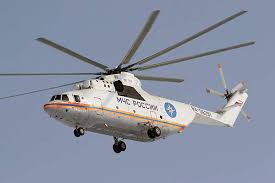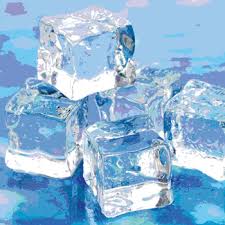Stamp: Soviet Antarctic camp and map of Pole (Hungary 1959)
Soviet Antarctic camp and map of Pole (Hungary 1959)
14 March (Hungary ) within release International Geophysical Year goes into circulation Stamp Soviet Antarctic camp and map of Pole face value 40 Hungarian fillér
| Stamp Soviet Antarctic camp and map of Pole in catalogues | |
|---|---|
| Michel: | Mi:HU 1574A |
| Stamp Number: | Sn:HU 1215 |
| Yvert et Tellier: | Yt:HU 1269 |
Stamp is horizontal format.
Also in the issue International Geophysical Year:
- Stamp - Eötvös Torsion Balance and Globe face value 10;
- Stamp - Deep sea exploration: research vessel and iceberg face value 20;
- Stamp - Icebergs, penguins and polar light face value 30;
- Stamp - Soviet Antarctic camp and map of Pole face value 40;
- Stamp - Space probe approaching moon face value 60;
- Stamp - Sun and observatory face value 1;
- Stamp - Satellite, Sputnik and American Rocket face value 5;
- Stamp - Soviet antarctic camp and map of pole face value 40;
- Stamp - Space probe aproaching moon face value 60;
- Stamp - Sun and observatory face value 1;
- Stamp - Sattelite ,sputnic and american rocket face value 5;
- Stamp - Eotvos Torsion balance and globe face value 10;
- Stamp - Deep sea exploration face value 20;
- Stamp - Icebergs -polar light face value 30;
- Stamp - Deep sea exploration: research vessel and iceberg face value 20;
- Stamp - Deep sea exploration: research vessel and iceberg face value 20;
- Stamp - Deep sea exploration: research vessel and iceberg face value 20;
- Stamp - Satellite, Sputnik and American Rocket face value 5;
- Stamp - Soviet Antarctic camp and map of Pole face value 40;
- Stamp - Space probe approaching moon face value 60;
- Stamp - Sun and observatory face value 1;
- Stamp - Soviet Antarctic Camp and Map of Pole face value 40;
Stamp Soviet Antarctic camp and map of Pole it reflects the thematic directions:
A vehicle (from Latin: vehiculum) is a mobile machine that transports people or cargo. Typical vehicles include wagons, bicycles, motor vehicles (motorcycles, trucks, buses), railed vehicles (trains, trams), watercraft (ships, boats), aircraft and spacecraft. Land vehicles are classified broadly by what is used to apply steering and drive forces against the ground: wheeled, tracked, railed or skied. ISO 3833-1977 is the standard, also internationally used in legislation, for road vehicles types, terms and definitions.
A map is a symbolic depiction emphasizing relationships between elements of some space, such as objects, regions, or themes. Many maps are static, fixed to paper or some other durable medium, while others are dynamic or interactive. Although most commonly used to depict geography, maps may represent any space, real or imagined, without regard to context or scale, such as in brain mapping, DNA mapping, or computer network topology mapping. The space being mapped may be two dimensional, such as the surface of the earth, three dimensional, such as the interior of the earth, or even more abstract spaces of any dimension, such as arise in modeling phenomena having many independent variables. Although the earliest maps known are of the heavens, geographic maps of territory have a very long tradition and exist from ancient times. The word "map" comes from the medieval Latin Mappa mundi, wherein mappa meant napkin or cloth and mundi the world. Thus, "map" became the shortened term referring to a two-dimensional representation of the surface of the world.
Science is a systematic discipline that builds and organises knowledge in the form of testable hypotheses and predictions about the universe.Modern science is typically divided into two or three major branches: the natural sciences (e.g., physics, chemistry, and biology), which study the physical world; and the behavioural sciences (e.g., economics, psychology, and sociology), which study individuals and societies.The formal sciences (e.g., logic, mathematics, and theoretical computer science), which study formal systems governed by axioms and rules, are sometimes described as being sciences as well; however, they are often regarded as a separate field because they rely on deductive reasoning instead of the scientific method or empirical evidence as their main methodology. Applied sciences are disciplines that use scientific knowledge for practical purposes, such as engineering and medicine
A helicopter is a type of rotorcraft in which lift and thrust are supplied by horizontally spinning rotors. This allows the helicopter to take off and land vertically, to hover, and to fly forward, backward and laterally. These attributes allow helicopters to be used in congested or isolated areas where fixed-wing aircraft and many forms of short take-off and landing (STOL) or short take-off and vertical landing (STOVL) aircraft cannot perform without a runway.
Ice is water that is frozen into a solid state, typically forming at or below temperatures of 0 °C, 32 °F, or 273.15 K. As a naturally occurring crystalline inorganic solid with an ordered structure, ice is considered to be a mineral. Depending on the presence of impurities such as particles of soil or bubbles of air, it can appear transparent or a more or less opaque bluish-white color.





